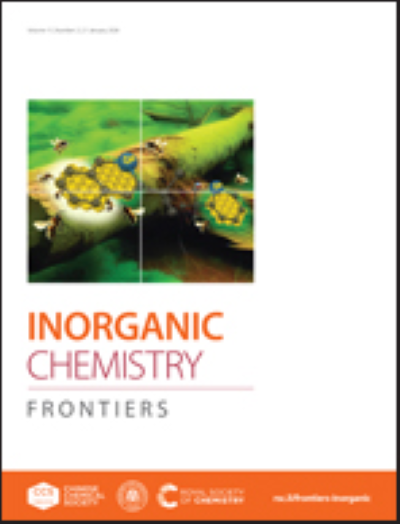具有光活化抗癌活性的钌(II)配合物的可转化顺反异构
IF 6.1
1区 化学
Q1 CHEMISTRY, INORGANIC & NUCLEAR
引用次数: 0
摘要
与传统治疗方法相比,光活化化疗(PACT)提供了一种新的替代癌症治疗策略。本文报道了一系列含有2-苯并恶唑-2-基酚酸酯(PBO)辅助配体的二异氰基钌(II)配合物Ru(PBO)2(RNC)2及其作为PACT试剂的潜在应用。该配合物具有两种几何异构体,即反式、反式、反式(T1 - T3)和顺式、反式、顺式(C1 - C3)。虽然C1 - C3在黑暗中对各种癌细胞表现出最小的细胞毒性(IC50 = 60.1 ~ 100 μM),但相应的T1 - T3复合物表现出更强的细胞毒性(IC50 = 3.7 ~ 39.4 μM)。C1在可见光(白光)照射下可以很容易地光转化为T1,如UV/Vis和1H NMR所示。与c型类似物相比,t型的毒性增加部分归因于其与谷胱甘肽的反应。在体外和体内研究了T1的抗癌活性。这是首次证明异氰基钌(II)配合物Ru(PBO)2(CNR)2的光异构化是一种有吸引力的抗癌PACT药物。本文章由计算机程序翻译,如有差异,请以英文原文为准。
Transformable Cis-trans Isomerism of Ruthenium (II) Complexes with Photoactivated Anticancer Activity
Photoactivated chemotherapy (PACT) provides a new alternative cancer treatment strategy compared to conventional therapy. In this study, a series of diisocyano ruthenium (II) complexes Ru(PBO)2(RNC)2 containing 2-benzoxazol-2-ylphenolate (PBO) auxiliary ligand and their potential application as PACT agents are reported. The complexes exhibit two geometric isomers, i.e., trans, trans, trans (T1 – T3) and cis, trans, cis (C1 – C3) forms. Although C1 – C3 show minimal cytotoxicity (IC50 = 60.1 to >100 μM) toward various cancer cells in the dark, the corresponding T1 – T3 complexes exhibit much stronger cytotoxic effects (IC50 = 3.7 – 39.4 μM). C1 can be readily photoconverted into T1 upon visible-light irradiation (white light), as shown by UV/Vis and 1H NMR. The increased toxicity of the T-form is partially attributed to its reaction with glutathione, in contrast to the C-form analogue. The anticancer activities of T1 were studied in vitro and in vivo. This is the first study that demonstrates the photoisomerization of isocyano ruthenium(II) complex Ru(PBO)2(CNR)2 as an attractive approach for anticancer PACT agent.
求助全文
通过发布文献求助,成功后即可免费获取论文全文。
去求助
来源期刊

Inorganic Chemistry Frontiers
CHEMISTRY, INORGANIC & NUCLEAR-
CiteScore
10.40
自引率
7.10%
发文量
587
审稿时长
1.2 months
期刊介绍:
The international, high quality journal for interdisciplinary research between inorganic chemistry and related subjects
 求助内容:
求助内容: 应助结果提醒方式:
应助结果提醒方式:


